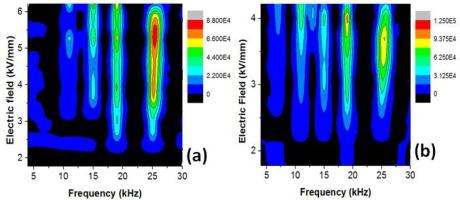Journal of CO2 Utilization ( IF 7.7 ) Pub Date : 2020-06-15 , DOI: 10.1016/j.jcou.2020.101207 G.R. Dey , S. Kamble

|
The transformation of carbon dioxide (CO2) to carbon monoxide (CO) employing atmospheric pressure dielectric barrier discharge (DBD) cold plasma is reported. This work is carried out with an objective to re-utilize CO2 in the form of CO, which is extremely useful in various industries. Under the study, neat CO2 gas stream is used to investigate effective conditions for achieving high yields of CO using coaxial cylindrical tube type double and single dielectric DBD reactors. The different central electrodes for example Pyrex and bare metal such as Aluminium (Al), Copper (Cu) and Stainless steel (SS) along with common outer Pyrex tube combinations respectively in double dielectric (DD) and single dielectric (SD) surface reactors are used separately. DBD outlet products such as CO and leftover CO2 are analyzed and estimated with online gas chromatograph-flame ionization detector after separating them with a suitable GC column followed by their conversion to methane using Ni-catalyzed methaniser. Furthermore, the investigation of CO production is made with gas residence time (CO2 flow), applied electric field and working frequency variations. Optical emission spectroscopy (OES) for mechanistic details and power measurement for quantitative analysis are carried out. The production of CO from 200 to 70,000 ppmv is observed with DD reactor respectively at 50 Hz and 19 kHz frequencies. In case of SD reactors, the CO yields obtained are higher with the utmost CO concentration ∼130,000 ppmv using Cu central electrode following as a minimum 13 % of CO2 transformation.
中文翻译:

电极材料和频率对二氧化碳介质阻挡放电中一氧化碳形成的影响
据报道,利用大气压介质阻挡放电(DBD)冷等离子体将二氧化碳(CO 2)转化为一氧化碳(CO)。这项工作是与目标进行重新利用CO 2以CO的形式,这是在各种工业极其有用。在研究中,纯净的CO 2气体流用于研究使用同轴圆柱管型双介质和单介质DBD反应器实现高收率CO的有效条件。分别在双电介质(DD)和单电介质(SD)表面反应器中使用的不同中心电极(例如派热克斯和裸金属,例如铝(Al),铜(Cu)和不锈钢(SS))以及常见的外部派热克斯管组合是单独使用。用合适的GC色谱柱分离DBD出口产品(例如CO和残留的CO 2)后,通过在线气相色谱-火焰电离检测器进行分析和评估,然后使用Ni催化的甲烷化器将其转化为甲烷。此外,通过气体停留时间(CO 2流量),施加的电场和工作频率变化。进行了用于机械细节的光学发射光谱(OES)和用于定量分析的功率测量。用DD反应器分别在50 Hz和19 kHz频率下观察到200至70,000 ppmv的CO产生。在SD反应器的情况下,使用Cu中心电极获得的CO收率更高,最高CO浓度约为130,000 ppmv,随后至少要转化13%的CO 2。



























 京公网安备 11010802027423号
京公网安备 11010802027423号